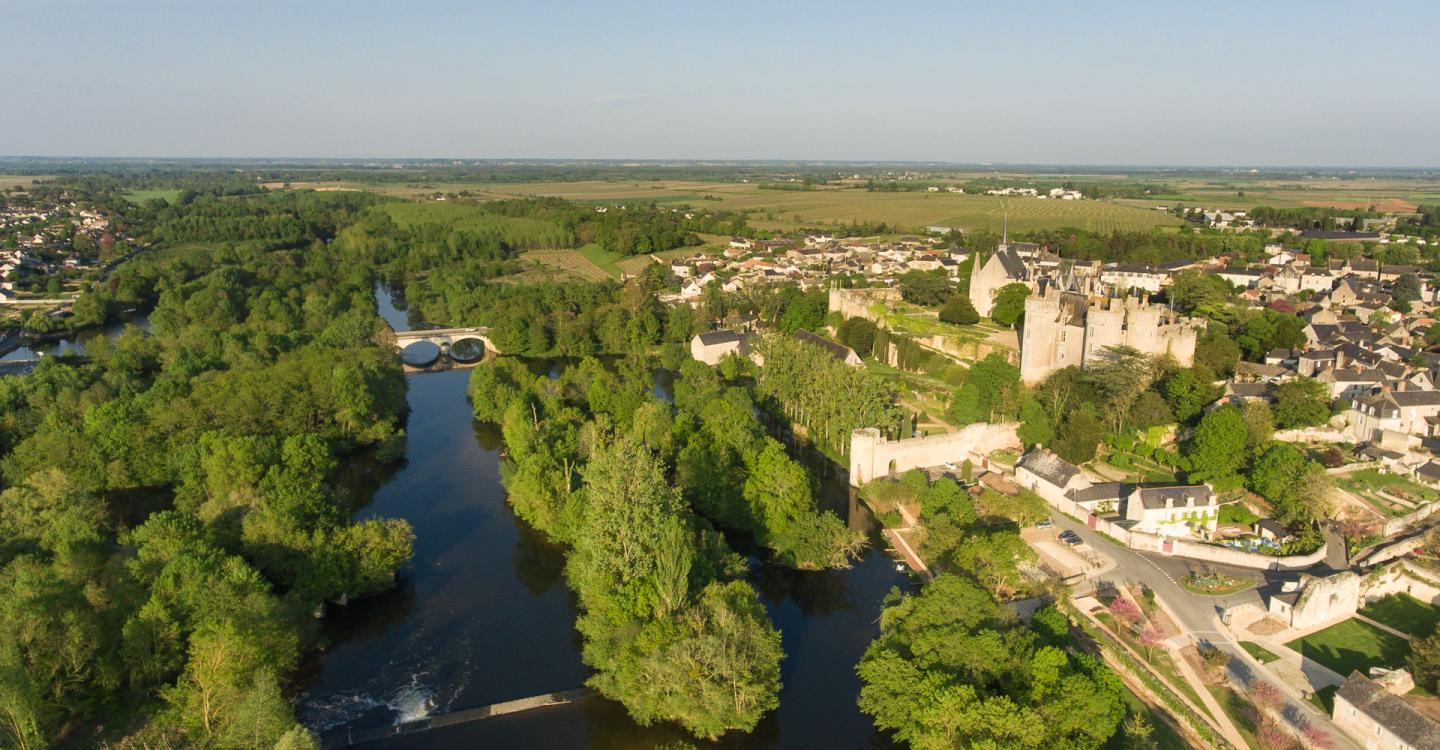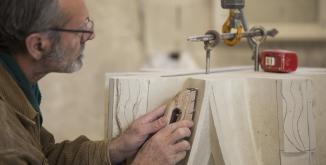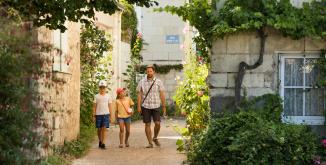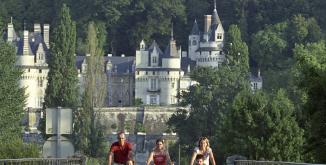The Loire valley is famous all over the world for its prestigious castles (Azay-le-Rideau, Saumur, Langeais, Chinon, Villandry…). But you can also find a multitude of private mansions, manor houses and stately houses there. The Loire-Anjou-Touraine Park is situated right in this valley and is packed with architectural masterpieces to visit and admire.
Throughout the Middle Ages, the Counts of Blois, Anjou and Poitou battle for the regions of Saumur and Chinon. They build impressive fortresses to protect their residences and parade their power: the castles of Saumur, Langeais, Montreuil-Bellay, Chinon, Montsoreau... They appoint men of confidence to manage these strategic places.
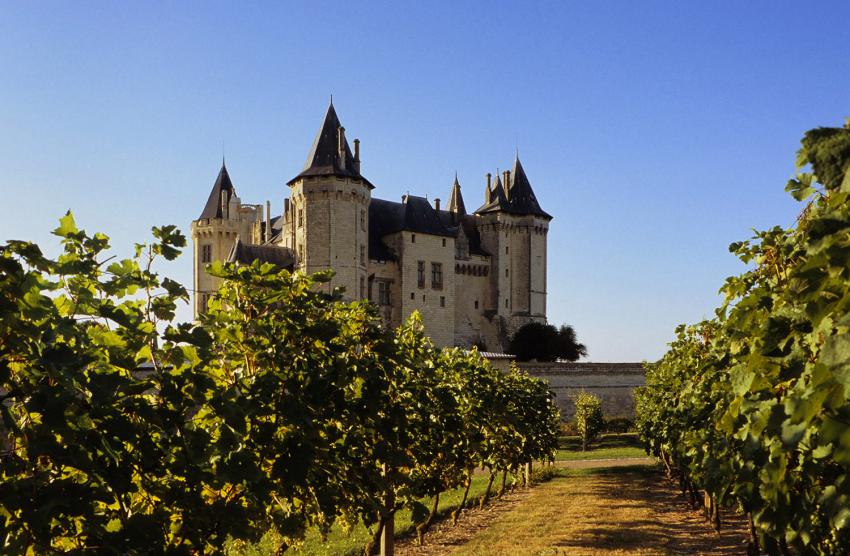
In the middle of the 11th century, the Count of Anjou takes power over the territory. Throughout the 12th and 13th centuries, while the Plantagenet and Capet families fight over the power in the province, multiple secondary buildings are added to the defensive system around the fortresses and foster the lords’ influence. Some of them still look like castles (Montsabert, Crissay-sur-Manse...) while others are transformed into residences, such as the castles of Brézé or Gizeux.
The Hundred Years' War starts in 1337. Armed conflicts are on the rise in Anjou and Touraine. In 1427, Charles VII, legitimate heir to the throne of France, establishes his court in the Chinon castle. It is behind the walls of this royal fortress that Jeanne d’Arc convinces the crown prince to get crowned in Reims.
After the war, René d’Anjou organises the economic recovery of his county. The “bon roi René”, as he is also called, and people close to him have their mansions built or rebuilt: the castles of Saumur, Montreuil-Bellay, Pimpéan in Grézillé ... The owners now concentrate more on the charm than the defensive function of their residences.
When René d’Anjou dies, the county of Anjou is reintegrated into the Kingdom of France. In Touraine, the court of Louis XI settles on the Loire riverside, close to Tours. It is a prosperous period for both provinces and some new castles are built at that time: Rivau in Lémeré, Langeais, Coudray-Montpensier in Seuilly, Ussé in Rigny-Ussé...
In the countryside, the number of manors and mansions continues to grow, witnessing the prosperity of the region.
The royal mansions: the castles of Chinon, Saumur and Langeais
In the middle of the 12th century, the estate of the Plantagenets spreads from the Pyreneees to Scotland. The county of Anjou is the heart of it. Henri II Plantagenet, King of England and Count of Anjou decides for Chinon to become his continental capital city. He orders the construction of the Fort Saint-Georges at the heart of the fortress. In 1205, the French King Philippe-Auguste takes hold of Chinon. He reinforces the ramparts and has the dungeon of Coudray built. Later on, the court of Charles VII establishes in Chinon. The castle belongs to the Royals up to the 17th century.
Only 30 kilometres away, the castle of Saumur is built in the 10th century. But his current appearance is due to reconstruction works ordered by Louis the First of Anjou in 1367. The covered walk of the castle of Saumur is adorned with fleurs-de-lis and confined within octagonal towers. The castle naturally imposes itself as a fortress and royal residence. Today, the sumptuous building is open to visitors and still has the same appearance given in “Les Très Riches Heures du duc de Berry”, a famous illuminated manuscript dating back to the beginning of the 15th century.
King Louis XI, son of Charles VII and Marie d'Anjou particularly cherishes the Touraine. He holds residence at the castle of Plessis-lez-Tours most of the time, but we also owe him the reconstruction of the castle of Langeais. This castle had been destroyed by the English army during the Hundred Years’War in 1469. On its rocky promontory with a view over the Loire river, this castle is both a fortress and a sumptuous royal residence. It perfectly characterises architecture of the late Middle Ages.
King René and the prosperity of the Anjou region
The “bon roi René” (good King René) is one of the great historical figures of the late Middle Ages in Anjou. Accumulating titles (Duke of Anjou, Count of Provence, Duke of Bar and Lorraine, King of Naples, Sicily and Jerusalem), René’s very attached to the development of his Dukeries such as Anjou. His administration allows a fast economic recovery of the region after the Hundred Years’ War. Growth profits to all social classes.
He orders the renovation of the castles of Saumur and Beaufort. But he is also fund of more modest residences such as the manors of La Ménitré or Launay, which still exist today.
His family members follow his example and use the economic renewal for the renovation and enlargement of their castles and manors. In 1448, King René permits Gilles de Maillé-Brézé to fortify his castle and dig ditches around it. Today, the moats of the Brézé castle are the deepest of all Europe (18 metres). In Grézillé, the seneschal of Anjou (officer at the duke’s service) profits from the reconstruction of the castle of Pimpéan to decorate the vault of his chapel with great mural paintings. Guillaume d’Harcourt, René d’Anjou’s brother in law, has the castle of Montreuil-Bellay extended and embellished at the same period.
The local nobility and bourgeoisie are not to be outdone. Next to the lords’ castles, there are more and more private mansions and stately houses such as in Saumur, Montreuil-Bellay, Montsoreau, Longué, Souzay… This golden age should last after the death of King René up to the 16th century.
Castles of devoted servants of the kingdom
In the 15th century, the Loire valley becomes the seat of the royal court. Many families of Touraine and Anjou are at the King’s service. Some have family links, others hold important positions (chamberlain, chancellor, …). These people closest to power build or arrange the castles of Rivau, Montsoreau, Coudray-Montpensier, Ussé, Crissay-sur-Manse.
However, the most prestigious castles of Touraine date back to the Renaissance period. The sumptuous castle of Azay-le-Rideau is built between 1518 and 1523. The castle of Islette is finished in 1530. (The lattest is actually known for having been the hidden love garden of Auguste Rodin and his muse Camille Claudel at the end of the 19th century). Some years later, the castle of Villandry is transformed. Its square pavilions announce the period of classical architecture succeeding to the Renaissance style.
The heritage dating back to the 17th century is rather modest. The family of the poet Joachim du Bellay restores the castle of Gizeux; today, their amazing carved tombs can be visited at the local church. There are hardly any remains of the big constructions of the classical era, except for the castle of Richelieu, the chapel of Chavigny in Lerné (work of the royal architect Pierre Le Muet) and the dovecote of the former Roncée castle in Panzoult.
Similarly, the 18th century did not bring up major architectural masterpieces, except for the castle of Montgeoffroy which is an exceptional project both for its size and consistency. It was built in 1772 under the supervision of the Parisian architect Vincent Barré who happens to be the creator of the Louis XVI style. This castle is the residence of Louis Georges Érasme de Contades, Marshal of France. The building has not suffered any harm during the French Revolution. You can still find the typical furniture of this period there.
Manors, private mansions and houses of pleasure
The Loire valley might be famous for its castles, but you can also find manors and private mansions of the local nobility there.
In the late Middle Ages, these residences are composed of a « corps de logis » (principal block) and an upper floor most of the time. The staircase is situated in a polygonal tower contiguous to the façade. The double pitched roofs are made of slate. They have large gable dormers. The appearance of a manor starts from this model and is developed according to the owner’s financial possibilities. Sometimes, other small buildings symbolizing nobility are added: a dovecote, a chapel, additional defence elements such as moats and protecting walls.
Within the Loire-Anjou-Touraine Park area, the mansion Grand'Maison in Longué-Jumelles is a typical example of this. Same case for the castle of Saché which has become the Balzac museum. In the 19th century, the writer actually came to seek inspiration behind the walls of the manor.
The towns of Saumur, Chinon, Montreuil-Bellay or also Beaufort-en-Vallée are full of private mansions, residences and urban bourgeoisie houses. These families usually also had small summer residences in the countryside surrounded by fields. The family of François Rabelais for example had a private mansion in Chinon and a tenanted farm, the “métairie de la Devinière” in Seuilly. The manor is built on two floors and made of tufa. Today, it hosts a museum in memory of the famous writer.
In the 17th and 18th century, there are many country estates close to towns like Saumur. Their names are reminiscent of rustic pleasures: the pavilion, leasure, Tivoli, “Beausoleil” (bright sun), little Versailles, …

